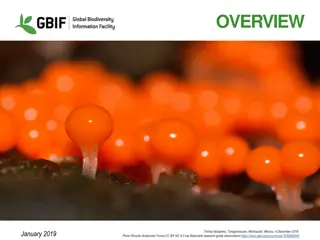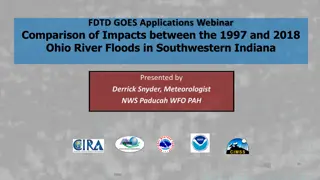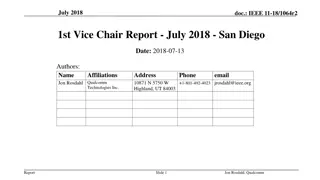
Understanding Hydrocarbons and Their Classification
Learn about hydrocarbons, including alkanes, alkenes, alkynes, aromatic hydrocarbons, alcohols, and carbonyl compounds. Discover the general formulas, examples, preparation methods, and characteristic reactions of each type.
Download Presentation

Please find below an Image/Link to download the presentation.
The content on the website is provided AS IS for your information and personal use only. It may not be sold, licensed, or shared on other websites without obtaining consent from the author. If you encounter any issues during the download, it is possible that the publisher has removed the file from their server.
You are allowed to download the files provided on this website for personal or commercial use, subject to the condition that they are used lawfully. All files are the property of their respective owners.
The content on the website is provided AS IS for your information and personal use only. It may not be sold, licensed, or shared on other websites without obtaining consent from the author.
E N D
Presentation Transcript
Hydrocarbons Compound containing only Carbon and Hydrogen and classified into: Alkanes R-H Alkanes are saturated Hydrocarbon compounds. Chemically, Alkanes are uncreative compounds because they are saturated compounds, all the bonds are strong sigma bonds. The general formula of Alkanes is CnH2n+2 Example: Cyclohexane Alkenes R-CH = CH-R Alkanes are unsaturated Hydrocarbon compounds containing double bond. They are reactive compounds because they contains weak ? bond. The general formula of Alkanes is CnH2n. Example: Cyclohexene Preparation of cyclohexene: Cyclohexanol Put 3ml of cyclohexanol in dry test tube + 0.5 ml of conc. H2SO4 (2) OH Cyclohexene
Alkynes ?? ?? Alkynes are unsaturated hydrocarbon compounds containing triple bond. The alkynes are also reactive compounds because they contains weak bonds . The general formula of alkynes is CnH2n-2. Example: Acetylenes HC CH. Preparation of Acetylene: Acetylene gas prepared by adding water to calcium carbide CaC2 (5) Procedure: Put 0.25 gm. from calcium carbide in dry test tube add 1ml of water and note the evolution of acetylene gas,
AROMATIC HYDROCARBOS Examples on Aromatic hydrocarbons: Benzene Toluene The most characteristic reactions for aromatic hydrocarbons are: 1) Nitration reaction. 2) Sulphonation reaction. 1-Benzen: Benzene is a colorless liquid , immiscible in water but miscible in all organic solvent, flammable and burned by heavy smoked yellow flame which indicate that it rich with carbon . 2-Toluene: Toluene is a colorless liquid , the boiling point is 110 C immiscible in water but miscible in organic solvent behave like benzene on burning .
ALCOHOLS COMPOUNDS R-OH Alcohols are compounds contains one or more hydroxyl groups (OH). Alcohols divided according to the type of carbon atom attached to the hydroxyl group in the molecule to Primary, Secondary& Tertiary alcohols. Oxidation test: It was found that Primary alcohols oxidizing to aldehyde and the Secondary alcohols oxidizing to ketone, but tertiary alcohols not oxidized Methanol CH3OH : Methyl alcohol is colorless liquid , have characteristic odor , miscible in water , toxic, burned by blue flame . Ethanol CH3CH2OH : Ethyl alcohol is colorless liquid , have characteristic odor , miscible in water , toxic , burned by colorless flame .
Carbonyl Compound 1-Aldehydes Aldehydes are produced by oxidation of primary alcohols, Ketones produced from oxidation of secondary alcohols. Examples: 2-Ketones H3C C H ; H3C C CH3; C H Acetaldehyde Acetone Benzaldehyde 1- Formaldehyde : H C H Formaldehyde is a gas and is available as aqueous solution which has a characteristic pungent odor. Acetaldehyde : CH3 C H It is a liquid b.p 21 generally used in aqueous solution which has also characteristic odor , miscible in water ,alcohol and ether .






















